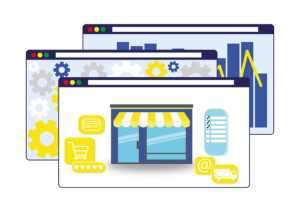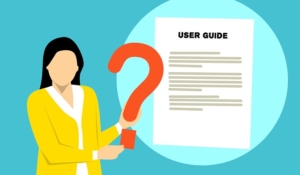Our top 10 tips that all SaaS vendors can consider implementing to optimize their SaaS pricing pages for conversion
April 2022
Author: Bryan Belanger
April 2022
Author: Bryan Belanger

There’s been a great response since we launched the Grade My Pricing Page service last week. Thank you to those who have participated!
We’ve graded 10 initially submitted pages and received some great feedback on the service from the early adopters. It’s been a lot of fun going through them, and in the process, we’ve learned a lot about pricing challenges from founders and early stage startups across a diverse set of SaaS categories.
In addition to our recent grading efforts, we also regularly visit a ton of SaaS pricing pages while collecting and updating our XaaS Pricing datasets. As such, we figured the timing was right to combine that data with some experiences from the recent Grade My Pricing Page deep dives to share a few broadly applicable insights on SaaS pricing page design and optimization.
Here are our top 10 tips that all SaaS vendors, regardless of size and/or category, can consider implementing to optimize their SaaS pricing pages for conversion:
Pricing pages are the first place your customers look when evaluating your product. It’s really important to help them understand in context what offerings and plans they should be considering. Instead of calling a plan “Team” and then diving right into a features description, create a plan name and heading that clarify for whom the plan is best suited. For example, “Startup Teams: For Small Businesses With Fewer Than 5 Employees.”
Often SaaS companies put most of their jobs-to-be-done copy on the homepage or product page of their website — or worse, all of their copy is focused primarily on features and capabilities, not the problem solved by the product. Again, the pricing page is a primary landing spot for prospective customers who are evaluating your product.
Adding brief headings that describe how each plan solves a problem and provides benefits for the ICP of that plan can elevate the entire pricing articulation. Using the example above, the heading could be extended to: “Startup Teams: For Small Businesses That Have Fewer Than 5 Employees and Want to Add Contacts and Start Sending a Limited Number of Marketing Emails Within 10 Minutes of Signup.”
Pricing pages have multiple options for CTAs, such as accessing a free trial, signing up for a free plan, creating an account or customer profile, booking a demo, entering a preconfigured demo, downloading an asset or template, contacting a salesperson via email, chatting with a bot, and/or chatting with a salesperson. These can quickly make a pricing page busy, even overwhelming, and customers may get confused as to the next best action to take.
Each plan should have a primary CTA that makes sense for the ICP of that plan. This is usually designed with a simple button placed in the plan summary section. CTA buttons should avoid generic language like “Sign Up” and focus on specific outcome-oriented actions, such as “Launch 14-day Free Trial Now.” Additionally, the CTA should never misrepresent an action. For example, we’ve seen many instances where the CTA button reads, “Choose Plan,” but then the navigation takes the customer to a page where they can book a call with a sales representative — this is not choosing a plan; this is setting up a sales call.
Lastly, end-to-end pricing page design should reduce or eliminate any barriers to customer actions. This usually means ensuring there are zero credit card requirements or seller interactions for initiating free trials or free plans, as well as ungating or reducing the amount of information required to access resources and submit actions.
Price points for SaaS offerings can become confusing and hard to compare quickly. For these reasons, many experts recommend that price anchoring tactics be used on SaaS pricing pages. This usually refers to how “good-better-best” plans are priced and positioned on the web page. We believe that using value and usage metrics is an even better way to anchor pricing as well as educate customers.
Value metrics often define how a product is priced to the customer (for example, $X per user, $Y per GB). Even if this is not how pricing is structured, value metrics and usage metrics should be listed at the top of the plan’s summary, such that customers can readily understand how the unit pricing of the product scales for different plans and at different sizes of consumption. Borrowing a non-SaaS example, it’s easier to intrinsically understand that an average-sized iced coffee costs $3 to $4 per coffee than it is to say that my monthly coffee spend is $100.
Like most pricing page components, plan comparisons are best done simply and using a storyteller’s touch. Instead of getting bogged down in feature-by-feature comparisons for each plan, a best practice is to add copy that says something like, “Everything in Team plan, plus … .” Underneath add three to five key points that define the next plan tier, integrating key value and usage metric elements as noted above. Don’t be afraid to structure these bullets around jobs to be done and outcomes, and leave the capabilities details to the features tables. Slack’s pricing page is a good example of this type of implementation.
Features tables are a fact of life on SaaS pricing pages, but we believe they should play a supporting role, not a starring role. Feature-by-feature comparisons become most important for customers in the later stages of evaluating the right plan and checking comparative boxes during competitive comparisons, but they do little to articulate value and motivate calls to action. We believe they should be trimmed down as much as possible and often hidden behind a “click to see detailed features” button, such as the one that ClickUp uses.
One additional thing: We’ve seen instances where vendors will place pricing information for add-ons, secondary pricing models and/or overages on features tables. Pricing information should never be buried on the page, and features tables should focus on comparing features only.
As we’ve noted a few times, prospects will often land on your pricing page first, and then take their first actions based on what they see there. This makes the pricing page a key place to value sell your offering. One easy, low-cost way to do this is by integrating social proof into the design of the pricing page. This helps articulate and anchor the value of your product in the context of the pricing being proposed for each of your product’s plans.
For example, a customer may look at your pricing page and think, “$599 per month for the Business plan? That seems expensive, given we are just starting out with RPA.” Perhaps that customer delays a buying decision because of the initial sticker shock. Let’s consider a different context, in which the pricing page has a quote from a customer that says, “It took us two weeks to go live with the Business plan, and we’re saving 1,000 man hours across three operational processes as a result.” This type of social proof could drastically shift the context in which the prospect digests that $599-per-month pricing.
A pricing Q&A is pretty much a standard component of the pricing pages we’ve reviewed. The Q&A usually provides some basic additional information on pricing and services consumption, such as how pricing metrics are counted for billing, billing terms, plan upgrade conditions and triggers, and related topics. Adding this type of information, particularly if done transparently and conversationally, can be a major value-add. The Q&A section is often a place for potential malpractice, too, however. Often we see vendors using the Q&A as an area of first mention for secondary or overage charges, or plan minimums and maximums not mentioned in the plan summary. The Q&A should expand on the key elements of the pricing page, not serve as a place to bury material information on pricing that could impact total plan costs for customers.
Annual plans make sense for most SaaS offerings that are sold based on subscription metering terms. If annual plans are offered, they should be presented with a clear pricing toggle so customers can quickly navigate between the price points for the annual plan versus the month-to-month offer. Best practice is to add callout copy that says something like, “Save 20% with an upfront annual commitment!” or similar. Many vendors that use annual plans also opt to have the annual plan show up as the default option when the pricing page is opened.
We see three primary pricing page archetypes being used in the market today. One is a “starting at” pricing page, which typically provides the lowest volume list pricing, some packaging details and other general information. These pages don’t usually support purchasing without the engagement of a sales representative. The next is a “typical” pricing page, which enables self-service transactions for lower-end plans and, if applicable, facilitates a sales call for enterprise-level plans. These pages usually provide more details on pricing and terms, and self-service plans usually are defined with clear limits on usage.
The last is an “advanced” pricing page, in which customers can basically provision their own pricing for their specific deal based on the tools on the page. This often includes a slider feature for determining pricing based on volume and, in some cases, a drop-down menu to get localized pricing (if applicable) for the markets in which the vendor sells. (ActiveCampaign is a good example of this type of page.) Localized pricing is a good idea for nearly all businesses that sell in multiple markets; volume sliders can make a lot of sense for companies with products scaling by a clear usage-based value metric.
We’ll be doing deep dives on these 10 tips in future blog posts, as well as expanding on our thoughts on pricing page design and implementation generally.
While we’ve selected 10 key things to think about for today’s post, there are over 25 elements that we grade with our Grade My Pricing Page service. Don’t miss this opportunity for free advice on how your pricing page approach is faring across these areas and more broadly!
 ©2022 XaaS Pricing. All rights reserved. Terms of Service | Website Maintained by Tidal Media Group
©2022 XaaS Pricing. All rights reserved. Terms of Service | Website Maintained by Tidal Media Group

 20 places to look for SaaS pricing information on your competitors
20 places to look for SaaS pricing information on your competitors